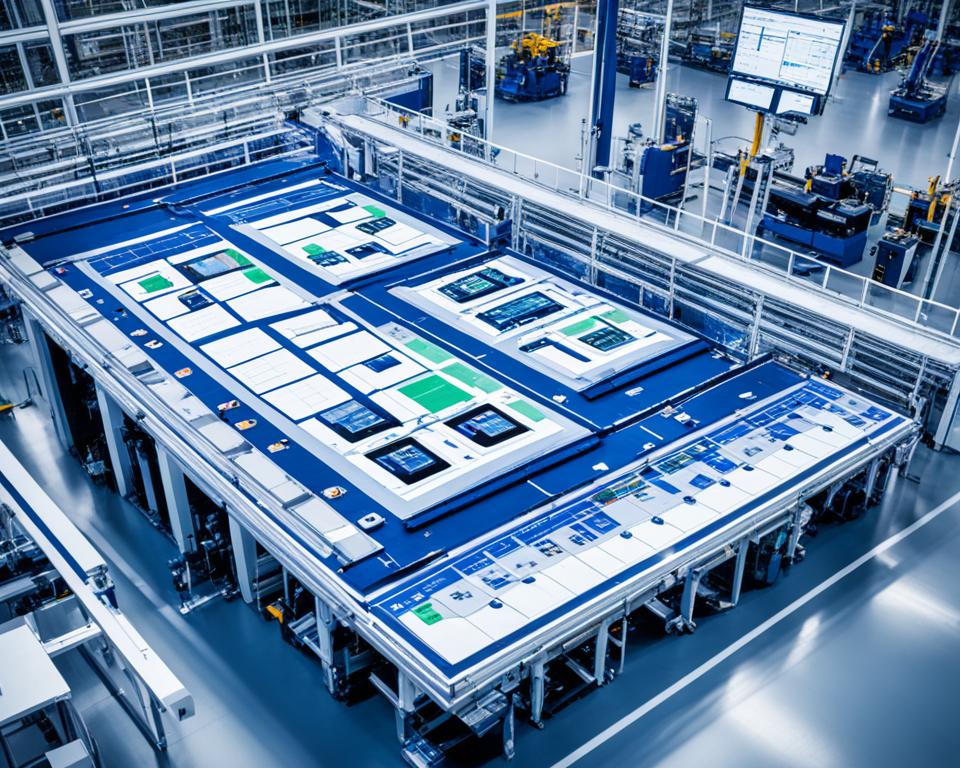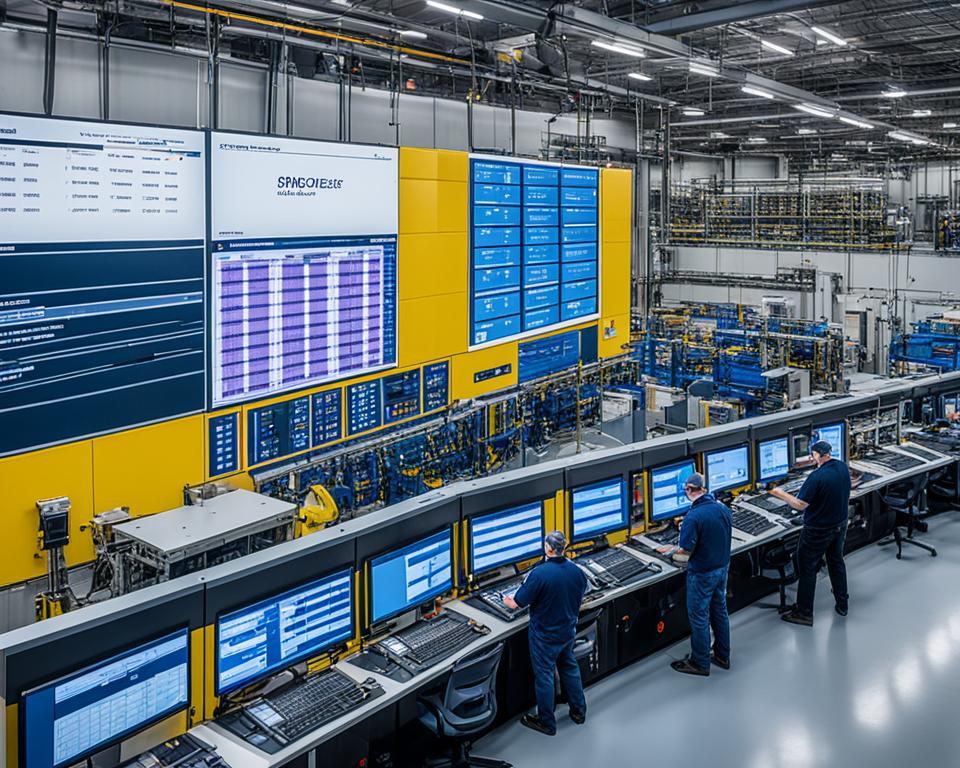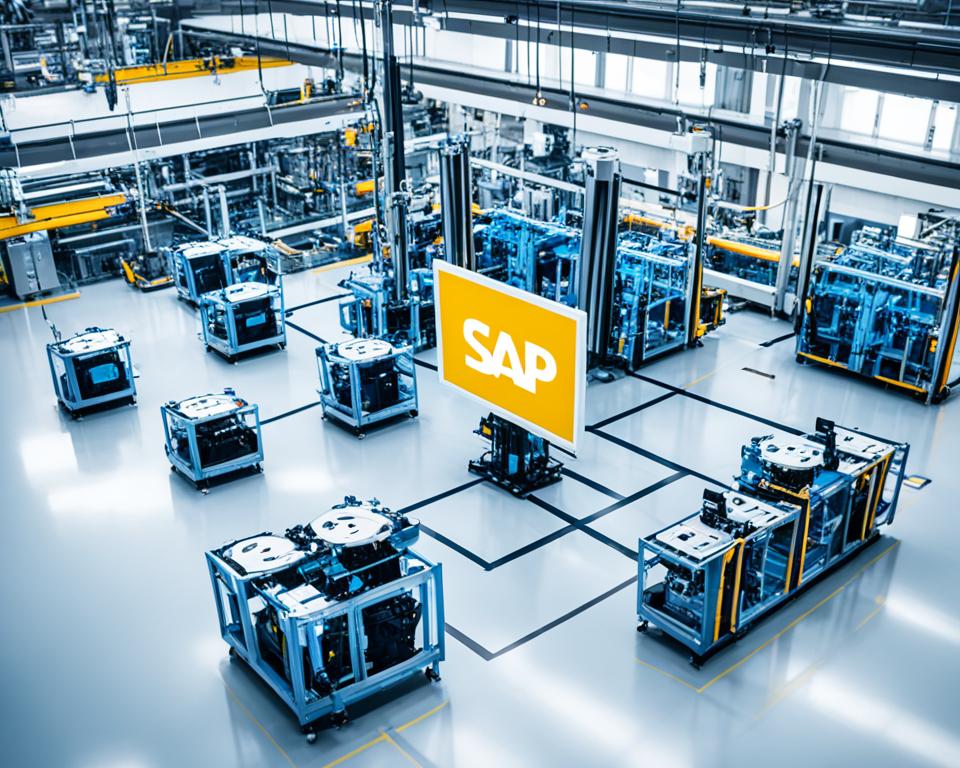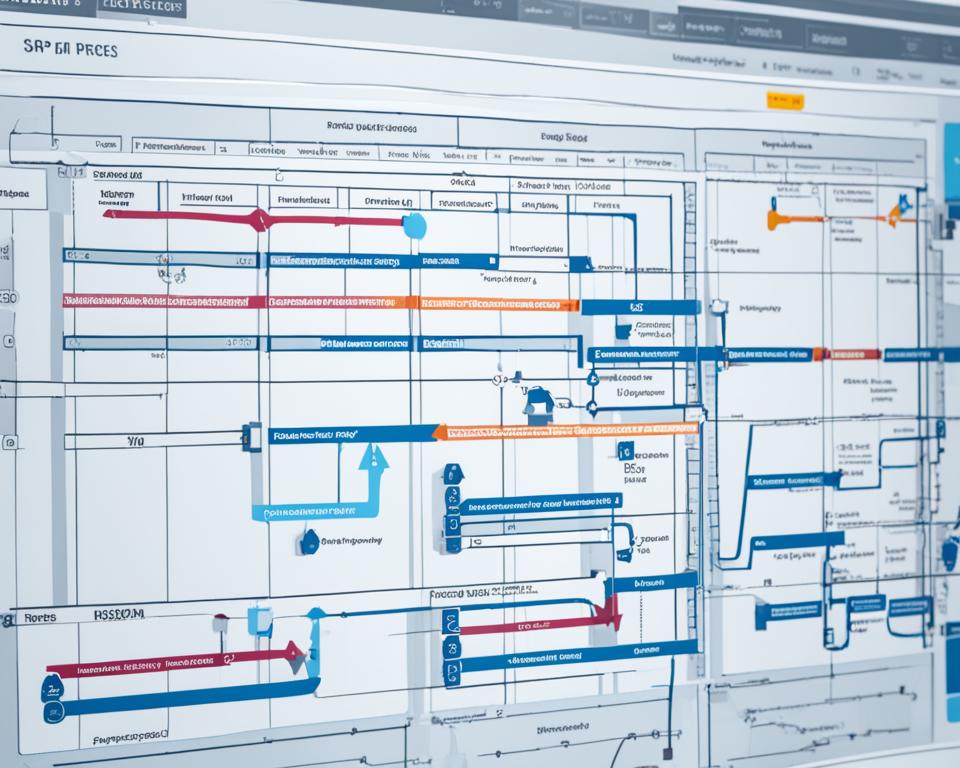Ever wondered how top companies bring new products to market so fast? The answer often is SAP PLM, a key tool for managing the product lifecycle. It helps companies work better and get products out faster. In today’s fast-paced world, being able to speed up operations and cut down on time-to-market is key to standing out.
SAP PLM solutions are vital for making the product lifecycle more efficient. They help companies manage their products better and work more efficiently. By using SAP PLM, companies can make their operations smoother and faster.
SAP PLM solutions make it easier for businesses to work together, use advanced analytics, and communicate better. They help manage product development and improve relationships with suppliers. With these tools, companies can quickly adapt to changes in the market and what customers want.
Key Takeaways
- SAP PLM significantly enhances efficiency in product lifecycle management.
- Streamlined processes lead to faster time-to-market.
- Centralized collaboration improves inter-departmental communication.
- Advanced analytics facilitate better decision-making.
- Integrating SAP PLM fosters strong supplier relationships.
- Agility in responding to market changes is crucial for success.
Understanding Product Lifecycle Management
Product lifecycle management (PLM) is key to managing a product from start to finish. It covers from the first idea to the end of its life. This method boosts product quality and helps teams work together better. It keeps everyone on the same page from start to finish.
Knowing the stages of a product’s life helps companies improve and get more value from their investments.
What is Product Lifecycle Management?
PLM is a strategy that brings together people, processes, data, and technology. It helps companies manage their products better. It makes sure everyone has the same product info, which helps in making smart decisions.
As companies see how valuable PLM is, they’re making their product development more efficient and innovative.
Key Stages in the Product Lifecycle
The stages of a product’s life are key to managing it well. Here are the main stages:
- Conception: This is where ideas start and market needs are looked into, often through research.
- Development: Here, detailed designs are made, prototypes are tested, and the product is checked for its workability.
- Production: In this stage, the product is made, focusing on making it efficient and high quality.
- Monitoring and Service: After launching, keeping an eye on the product and supporting it is crucial to make customers happy and fix any problems.
- Retirement: Eventually, products come to the end of their life, needing good ways to dispose of or recycle them.
The Importance of Efficiency in Product Development
In today’s fast-paced market, being efficient in product development is key to success. Traditional methods often face challenges that slow things down. By tackling these issues, companies can open up new doors for innovation and growth.
Challenges in Traditional Product Development
Product development faces several hurdles that can slow teams down. These include:
- Long lead times: Projects often take longer than expected, which delays getting products to market.
- Poor collaboration: Teams may find it hard to communicate well, leading to confusion and not being on the same page.
- Miscommunication among teams: Different departments might not share important info, causing mistakes in the project.
Benefits of Streamlined Processes
Using tools like SAP PLM can make product development more efficient. It simplifies work and helps teams work together better. The main advantages are:
- Reduced time and cost: Making processes smoother can cut down on how long projects take and what they cost.
- Enhanced collaboration: Better communication tools help teams work together more effectively.
- Fewer errors: Sharing information clearly means projects are done more accurately and with fewer mistakes.

| Challenge | Impact | Solution with SAP PLM |
|---|---|---|
| Long lead times | Delays in product launch | Streamlined workflows |
| Poor collaboration | Misalignment of goals | Integrated communication tools |
| Miscommunication | Increased errors | Centralized information repository |
Exploring SAP PLM Solutions
SAP PLM solutions offer a wide range of features to improve the product lifecycle. They cover project management, compliance, and portfolio management. These tools are designed for different industries. Using them can make operations smoother and more efficient.
Overview of SAP PLM Features
SAP PLM has many features for managing the product lifecycle. Some key features include:
- Project Management: Helps plan, execute, and track projects for on-time delivery.
- Compliance Management: Keeps up with laws and quality standards.
- Portfolio Management: Helps manage product portfolios and align resources with goals.
- Change Management: Makes it easier to update products or processes, lowering risks.
- Collaboration Tools: Improves team communication, aiding in quicker decisions and solving problems.
Comparative Advantages of SAP PLM
SAP PLM has many benefits compared to other PLM solutions. These benefits include:
| Feature | SAP PLM | Competitor A | Competitor B |
|---|---|---|---|
| Integration with ERP | Seamless integration | Limited integration | Moderate integration |
| User Experience | Intuitive interface | Complex navigation | Standard user interface |
| Customization | Highly customizable | Low customization options | Moderate customization options |
| Compliance Features | Robust compliance tracking | Basic compliance support | Limited compliance features |
Understanding SAP PLM’s wide range of features and its advantages over competitors helps organizations. They can make better choices to improve their product development processes.
Integrating SAP PLM with Digital Product Lifecycle
Integrating SAP PLM with digital product lifecycle strategies is key for today’s businesses. It boosts operational efficiency by improving data management and product performance. Digital tools help teams share updates in real-time, cutting down delays seen in old methods.
Reports on Digital Product Innovation show how vital smooth communication is. Cloud-based solutions make sharing data and making decisions together easier. This leads to a better way of developing products.
Surveys by SAP show how this integration changes teams for the better. Companies using this approach are quicker to respond to market needs. This leads to better product quality and faster innovation.

| Aspect | Integration Benefits | Impact on Performance |
|---|---|---|
| Data Management | Streamlined processes and updates | Faster decision-making |
| Communication | Real-time information sharing | Improved teamwork and collaboration |
| Product Quality | Automation of quality checks | Reduction in errors and rework |
| Market Responsiveness | Agility in adapting to changes | Enhanced customer satisfaction |
Integrating SAP PLM with the digital product lifecycle helps use digital tools well. It keeps companies competitive in a fast-changing market.
Enhancing Collaborative Engineering with SAP PLM
In today’s fast-paced world, working together and clear communication are key. SAP PLM has tools that help teams work better together. These tools make sure everyone in the product development team has what they need.
Tools for Team Collaboration
SAP PLM’s team collaboration tools offer a single place for tracking documents, managing tasks, and sharing ideas. You get:
- Real-time document sharing and version control
- Integrated task management systems
- Visual project dashboards for monitoring progress
These tools help break down barriers and create a space where everyone can contribute well to the project.
Communication Flow Improvement
Good communication is key to making products faster and reducing mistakes. SAP PLM makes communication clear with:
- Automated notifications for updates and deadlines
- Discussion forums for real-time feedback and issue resolution
- Integration with other communication platforms, such as Slack or Microsoft Teams
By making team interactions smoother, companies can boost productivity and keep everyone on the same page. This approach not only speeds up projects but also lifts team spirits.
Effective Product Data Management Strategies
Using efficient product data management strategies is key to getting the most out of SAP PLM. Keeping all data in one place helps organize it better and makes it easier to find important info. It’s also important to keep the data accurate and secure throughout its life.
Centralized Data Storage
Storing data in one place makes it easier to manage. It stops data from being spread out and helps everyone see the same information. This way, everyone can have the latest data, which helps them work better together and make smart choices. Here are some benefits of storing data in one place:
- Increased Efficiency: Teams waste less time looking for data and can focus more on their work.
- Enhanced Data Security: Keeping data in one place makes it easier to watch over who can see it.
- Streamlined Processes: Having the same data everywhere cuts down on mistakes and makes things run smoother.
Data Accessibility for Teams
It’s important for teams to have the data they need right away for quick product development. With all the information in one spot, teams can work together well, even if they’re far apart. Giving the right people the right access to data keeps it safe while letting them get the info they need fast.
Here’s how having all data in one spot and making it easy to get to helps teams:
| Team | Before Centralized Storage | After Centralized Storage |
|---|---|---|
| Engineering | Slow response to design changes | Quick adaptation to modifications |
| Marketing | Delayed access to product specs | Immediate availability of updated information |
| Sales | Inconsistent data from multiple sources | Reliable data for enhanced customer interactions |
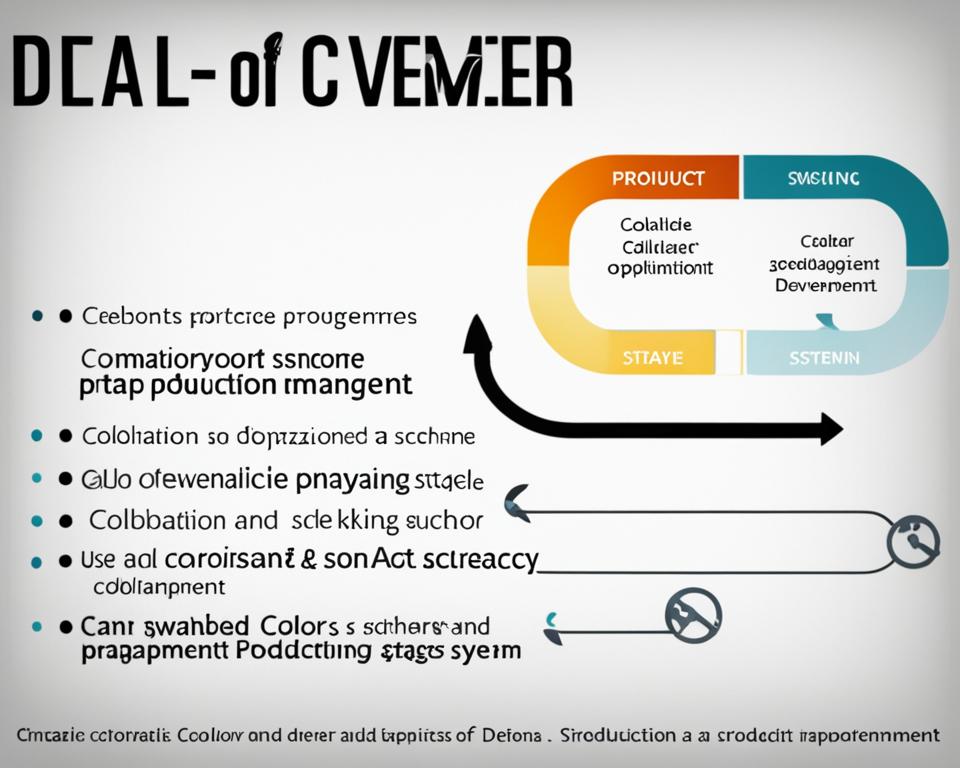
Understanding CAD Data Management in SAP PLM
In today’s world, managing CAD data is key to keeping projects on track and boosting productivity. SAP PLM helps companies manage design files better. It makes sure the latest versions are easy to find and organized well. This part explains how to manage CAD files well and solve common problems.
What is CAD Data Management?
CAD data management is about keeping track of design files and their details. It makes sure everyone in the team can find the files they need during product development. Good CAD data management means keeping track of versions and helps teams work together better.
Managing CAD Files Efficiently
Here are some key ways to manage CAD files well:
- Version Control: Keeping track of all CAD file changes helps avoid mistakes and duplicate work.
- Centralized Storage: Storing CAD files in one place in SAP PLM makes them easier to find and keeps them safe from getting lost.
- Integration with PDM: Working well with other product data management systems makes the whole process smoother and gives a full view of the product’s life.
Using these methods helps teams work better together, boosts productivity, and keeps CAD files accurate and complete during product development.
| Benefits | Impact on Workflow |
|---|---|
| Streamlined Access | Reduces time spent searching for files |
| Improved Collaboration | Facilitates collective input on designs |
| Risk Mitigation | Minimizes errors from outdated files |
| Enhanced Security | Protects sensitive design information |
The Role of Digital Mockup in Product Development
Using a digital mockup is now key in making products. It lets teams make three-dimensional designs early on. This way, they can see what the product will look like before making it real.
This method helps in making better design choices. It also lets teams spot problems early, avoiding costly changes later. Everyone involved can check and give feedback on the design quickly. This makes the design process smoother and faster.
Let’s look at how digital mockups have helped companies. Here’s a table with data from different studies:
| Company | Efficiency Improvement (%) | Cost Reduction (%) |
|---|---|---|
| ABC Corp | 30% | 25% |
| XYZ Inc | 40% | 35% |
| Tech Solutions | 50% | 40% |
These numbers show how digital mockups make a big difference. They help teams see their ideas early and work out problems. This leads to better projects and happier teams.
Leveraging Virtual Prototyping for Faster Innovation
Virtual prototyping is changing how we make products. It lets teams test digital models before making real ones. This way, products get better faster.
It helps teams work quicker and smarter. They can try out different ideas and fix problems fast. This leads to new products coming out quicker.
Benefits of Virtual Prototyping
Using virtual prototyping has many perks. Here are some main benefits:
- Reduced Costs: Making fewer physical prototypes saves money.
- Increased Speed: Teams can check out design changes and fix issues fast.
- Enhanced Collaboration: Virtual prototypes make it easy to share ideas with others.
- Improved Accuracy: New modeling tools help predict how a product will work in real life.
Implementation of Virtual Prototyping Techniques
Adding virtual prototyping to SAP PLM can make things better. Here’s how to do it right:
- Use CAD tools that work well with virtual prototypes.
- Train teams on making the most of virtual models.
- Have feedback loops so people can give input on prototypes right away.
- Set up clear ways to check if prototypes work well and keep improving.
Simulation and Validation Processes in SAP PLM
Simulation is key in product development. It helps make designs more accurate and speeds up getting products to market. By using advanced simulations, I can test how products will work before making real prototypes. This helps spot design issues early and find better solutions.
Importance of Simulation in Development
Simulations give a deep look at how a product will act over its life. They let me test tough scenarios without the high costs. This way, I can avoid risks and make development more efficient. It’s crucial for meeting industry standards and what customers expect.
Tools for Validation in SAP PLM
Tools for validation in SAP PLM help me make sure my products are top-notch. SAP offers many resources for this. These tools make validation smoother by testing thoroughly and checking for rules. Every step is documented, making sure the final product is up to par.

For more info on customizing SAP with ABAP and using its full power, check out this SAP resource. It helps me understand SAP PLM better and improve my validation methods.
Ensuring Product Quality Management with SAP PLM
Keeping a competitive edge in today’s market means focusing on product quality. SAP PLM is a powerful tool that boosts quality control from start to finish. It helps companies set up structured quality plans. This ensures products meet both legal and customer expectations.
Quality Assurance Strategies
For businesses aiming for top quality, quality assurance strategies are key. SAP PLM supports different methods for consistent and reliable product making. It brings together tools and workflows to make processes smoother. This way, teams can spot problems early.
Methods like Failure Mode and Effects Analysis (FMEA) and statistical process control are part of a strong quality plan.
Tracking Quality Metrics Effectively
Keeping an eye on quality metrics gives insights into how products are doing and where they can get better. With SAP PLM, companies can watch important metrics like defect rates and customer satisfaction. This info helps meet industry standards and improve product quality.
Using SAP’s features, companies can make smart choices and better manage their product quality.
| Quality Metric | Description | Importance |
|---|---|---|
| Defect Rate | Percentage of products that fail to meet quality standards | Helps identify areas needing improvement in production |
| Compliance Rate | Rate at which products meet regulatory requirements | Ensures legal and safety standards are upheld |
| Customer Satisfaction | Level of satisfaction reported by customers post-purchase | Directly correlates to brand loyalty and repeat business |
Using SAP PLM’s full features makes it easier to improve quality plans and track metrics. For more on procurement and product quality, see this helpful link.
Real-world Examples of SAP PLM Success
Many companies have seen big improvements in efficiency and product quality by using SAP PLM. I’ll share some SAP PLM success stories that show the real benefits. Each story gives us a look at the problem, how SAP PLM helped, the results, and what was learned. This helps us see how SAP PLM can make things more efficient.
Case Study: Increased Efficiency
A big car maker used SAP PLM to manage their product data better. Before, they had different systems and workflows that didn’t work well together. With SAP PLM, they made their processes much smoother. This led to a big cut in how long it took to bring out new car models.
Case Study: Improved Product Quality
A top electronics brand chose SAP PLM to make their quality checks better. They started using advanced data analytics to watch product quality closely. This change led to more reliable products and fewer customer complaints, showing a big shift in how they managed quality.
| Company | Initial Challenges | Intervention | Results |
|---|---|---|---|
| Automotive Manufacturer | Disparate systems, inefficiencies | Implemented SAP PLM | Reduced time-to-market by 30% |
| Consumer Electronics Brand | Poor product reliability | Adopted SAP PLM analytics | Increased reliability, decreased complaints by 25% |

Future of SAP PLM in Product Lifecycle Management
Looking ahead, SAP PLM is set to change in big ways. Trends show a push for better integration and teamwork in digital spaces. Companies are moving to cloud-based solutions to keep up with new product management methods.
Trends in Industry Standards
Industry standards are shifting towards sustainability, digital change, and making decisions with data. Companies will work together more, sharing info in real time. SAP PLM’s future depends on making these processes global and quick to adapt to market changes.
Advancements in SAP Technology
SAP technology is key to these changes. Better analytics, easier user interfaces, and AI integration will change how we manage products. I see SAP PLM becoming a hub for efficiency and innovation, thanks to predictive analytics.
Automation in procurement is becoming more common, as seen in case studies. This helps companies run better.
Conclusion
This overview of SAP PLM shows how it boosts efficiency, teamwork, and product quality. It uses SAP PLM features like centralized data and tools for working together. This helps businesses make products faster and ensures they meet quality standards.
Experts say SAP PLM is key to the future of managing products. It brings new tools for testing and improving projects. Users find it makes work flow better and products perform better too.
Using SAP PLM improves processes and prepares companies for growth. To improve your buying practices, check out how SAP Ariba can work with PLM. This can make your supply chain more efficient. For more details, see this helpful guide: SAP Ariba: Your Guide to Smart.
FAQ
What is SAP PLM and how does it benefit businesses?
SAP PLM stands for Product Lifecycle Management. It helps manage a product from start to end. It makes businesses more efficient, helps teams work together better, and gets products to market faster. This way, products meet customer needs and quality standards.
What are the key stages in the product lifecycle?
The product lifecycle has four main stages: conception, development, production, and retirement. Each stage is crucial for managing the product lifecycle well. This helps businesses use resources wisely and improve product quality from the beginning to the end.
How does SAP PLM address challenges in traditional product development?
SAP PLM solves problems like long delays and poor teamwork by making processes smoother and managing product data better. This leads to better team communication and fewer mistakes in making products. It also cuts costs and speeds up product launches.
What features does SAP PLM offer?
SAP PLM has features like project management, compliance management, and portfolio management. These help make product development more efficient and support better decisions across the company.
Why is integration with a digital product lifecycle important?
Integrating SAP PLM with a digital lifecycle improves managing product data and keeps information up-to-date. This helps teams communicate and work together better. It greatly improves product performance and data accuracy.
What tools does SAP PLM provide for collaborative engineering?
SAP PLM offers tools for team collaboration that improve communication and teamwork among engineers. These tools help reduce mistakes and boost performance. This lets teams work more efficiently and effectively together.
Can you explain the significance of CAD data management in SAP PLM?
CAD data management is key in SAP PLM. It ensures CAD files are well-managed and fit into the product data systems. This keeps design data accurate and easy to access throughout the product’s life.
How does virtual prototyping enhance innovation speed?
Virtual prototyping lets teams test and improve designs without making real prototypes. This quick way to visualize and refine ideas speeds up innovation. It also cuts down on development costs and time.
What is the role of simulation in product development?
Simulation in product development checks designs before making them real. It spots potential problems early and makes changes. This makes the product better in quality and reliability.
How does SAP PLM ensure effective product quality management?
SAP PLM helps manage product quality by using quality checks and tracking important metrics. This ensures products meet standards and customer needs. It makes customers happier with their products.




